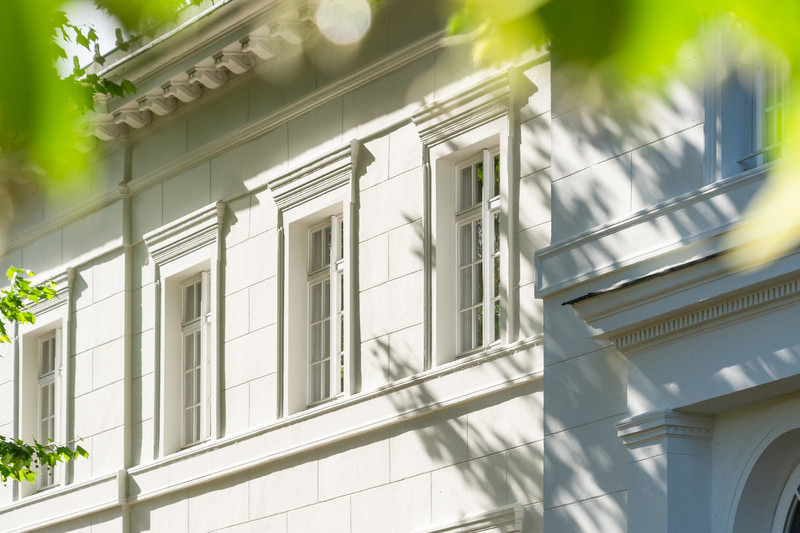1800 – the dawning of a new era
Art and society during the
emergence of Berlin classicism
Around 1800, Berlin finally outgrew its past as a small town and seat of the kings of Prussia and became a truly cosmopolitan city for the first time. Within only a few years, a rapid reorientation that encompassed all aspects of art and society led to Berlin becoming a cultural centre whose impact went beyond Prussia and whose reverberations still resonate to this day.
This heyday, now referred to as Berlin classicism, was shaped by some illustrious names: the young Johann Gottfried Schadow elevated statuary made in Berlin to a level that was on par with the rest of Europe, Carl Gotthard Langhans transformed the rococo-style architecture that was the norm under Frederick the Great and turned it into Prussian classicism. His pupil Friedrich Gilly, considered to have been the first modern architect by many despite the few buildings he completed, developed a style inspired by the architecture of the French Revolution. Ultimately, Karl Friedrich Schinkel continued the work of Gilly, who died at a young age. Starting in Berlin, he led architecture towards modernism. In literature, the works of Karl Philipp Moritz and Ludwig Tieck inspired the Romantics, such as Jean Paul, and the Schlegel brothers met Schleiermacher. Iffland reformed the theatre, Fasch and Zelter established a middle class concert culture and Wilhelm von Humboldt reformed Prussia's education system. Primarily, however, Berlin classicism was a phenomenon of debate, driven by the many, often Jewish, salons where usually women such as Rahel Varnhagen brought people together across the class divides.
Neuhardenberg was also visibly shaped by this still apparent spirit: Karl Friedrich Schinkel designed the church, the castle and also the actual village of Neuhardenberg in the classicist style we see today; Friedrich Gilly was responsible for the Vorwerk Bärwinkel. Neuhardenberg Castle's Garden Hall is said to have been designed by Carl Gotthard Langhans; Rahel Varnhagen accompanied the state chancellor Karl August von Hardenberg to the Vienna Congress and in 1817, Carl Friedrich Zelter initiated the construction of the Buchholz organ for Schinkel's new church.








